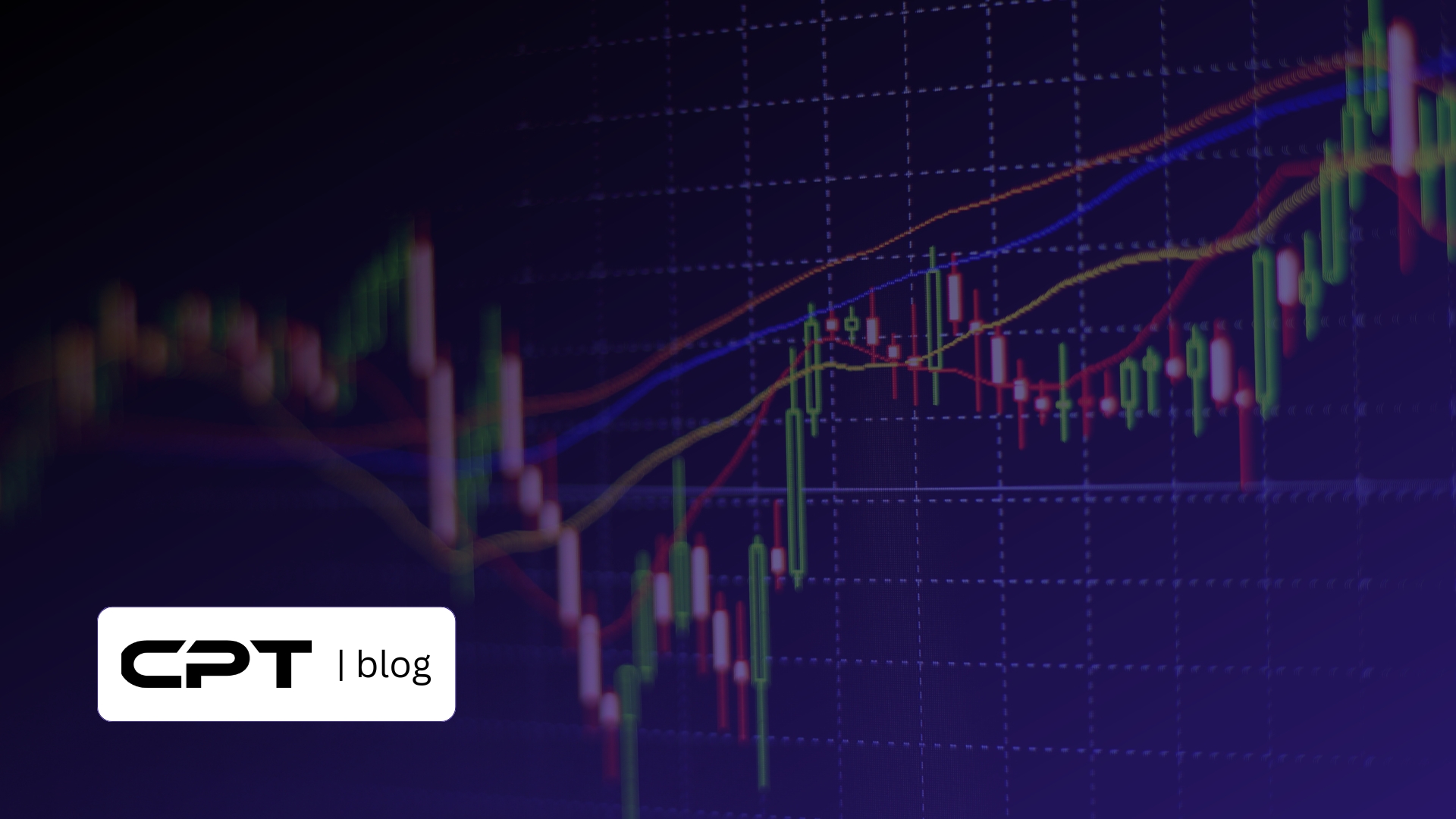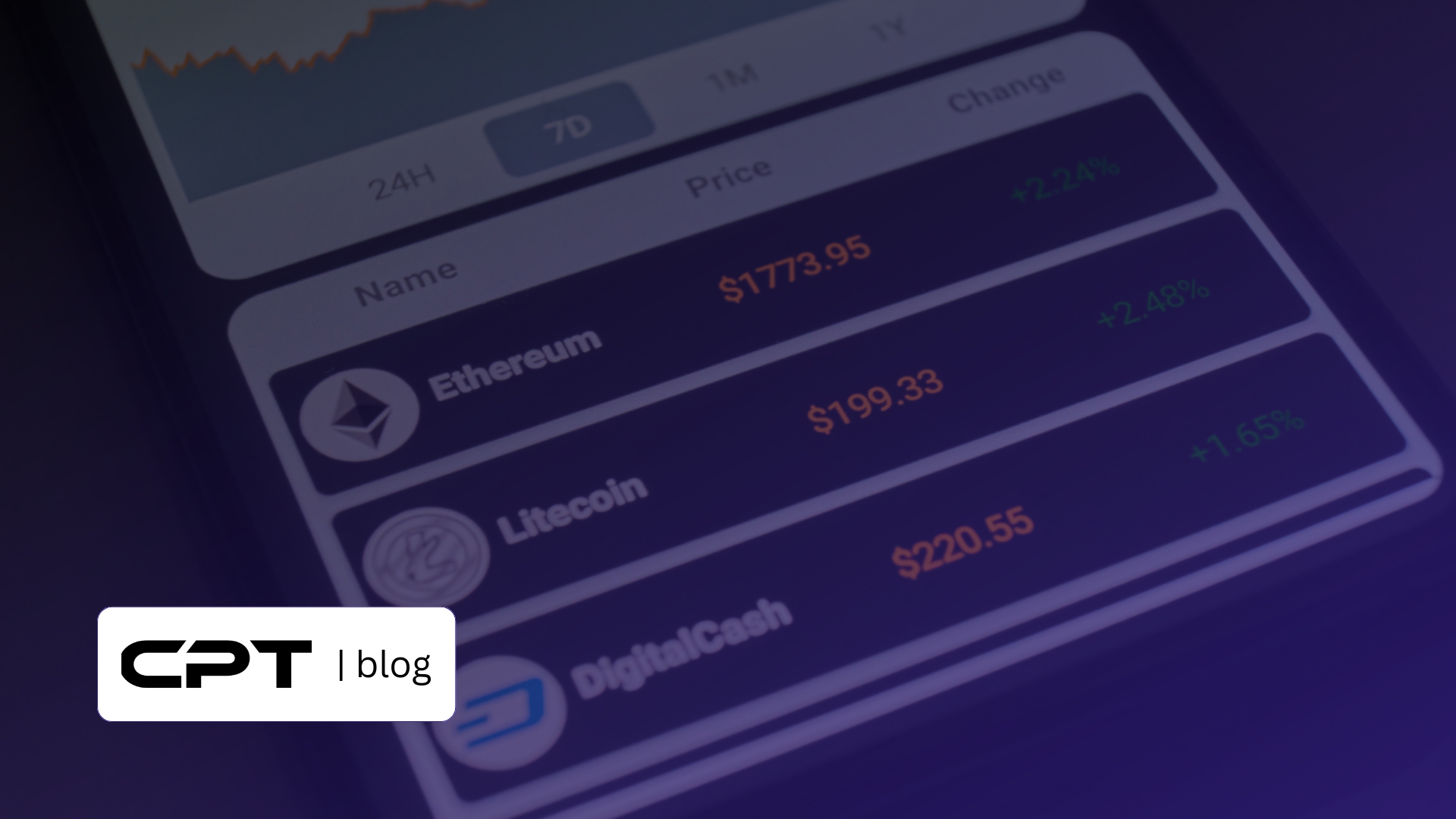
Best Crypto for Day Trading: Framework for Finding & Trading Volatile Coins
The crypto market operates 24/7, offering constant opportunities for active traders. With prices fluctuating rapidly within minutes or hours, it has become a prime hub for day traders aiming to profit from short-term price movements. Unlike long-term investing, day trading focuses on identifying quick patterns, acting swiftly, and closing positions within the same day to secure gains.
Before you start, an essential question is: which is the best crypto for day trading?
This guide helps you determine that with a practical, trader-focused approach. Instead of just listing popular tokens, we first examine what qualities make a cryptocurrency suitable for intraday trading. Then, we analyze seven leading coins based on actual market data and trading criteria. Finally, you’ll learn how to identify emerging opportunities early and how to increase your profits with a crypto prop firm.
What Makes a Crypto “Best” for Day Trading?
Randomly picking volatile coins is one of the fastest ways to lose money in crypto. Successful day trading isn’t about luck; it’s about strategy. That means choosing assets that align with your trading style and risk appetite. While preferences may vary, the best tokens for day trading tend to have a few things in common. In fact, almost every coin worth adding to a day trader’s watchlist shares five essential characteristics:
Volatility
Volatility refers to how much a cryptocurrency’s price moves over a given period. Day traders rely on volatility to create entry and exit points. Think of it like surfing: a calm sea doesn’t give you waves to ride. The more price movement a coin has, the more profit potential it offers.
For example, a coin that moves 5–10% intraday gives multiple opportunities to capture gains. According to CoinMarketCap, tokens like Solana and Pepe consistently rank high in intraday volatility.
Liquidity
Liquidity is how easily you can buy or sell a crypto asset without causing major price fluctuations. High liquidity ensures you can enter and exit trades quickly, which is critical when working with small price windows. Illiquid assets can trap you in a position or lead to slippage.
You can verify liquidity through 24-hour trading volume. Assets with over $500 million in daily volume across major exchanges generally offer excellent liquidity. You can check liquidity data using TradingView’s Screener.
High Trading Volume
Trading volume supports liquidity and signals interest. When more traders are buying and selling a coin, its price becomes more stable and less likely to move sharply from a single trade. This higher activity also leads to tighter bid-ask spreads, which means lower trading costs. According to CoinMarketCap, high-volume assets usually have better liquidity and smaller spreads, making them ideal for scalping or other fast-paced trading strategies.
Exchange Availability
Even the most volatile coin is useless if it isn’t available on a reliable exchange. Major platforms like Binance, Coinbase, Kraken, and OKX typically have strict listing standards. Projects must meet criteria related to security, transparency, and trading volume, among others. This reduces the risk of rug pulls and low-quality assets. Coins listed on these exchanges also benefit from better trade execution, lower fees, and higher liquidity. Plus, availability across multiple exchanges helps protect you from downtime or technical issues on a single platform.
Low Costs
Gas fees can destroy your profit margins, especially with small trades. For instance, Ethereum mainnet often has high gas fees, which makes it less ideal for scalping unless you’re using Layer 2 solutions. In contrast, Solana or Arbitrum offer low-cost transactions, making them better suited for high-frequency trading.
Our Selection Criteria
To evaluate the best crypto for day trading, we applied the following filters:
- Daily price volatility above 5%
- Minimum $500 million in 24-hour trading volume
- Listed on at least 3 Tier-1 exchanges
- Favorable transaction costs
- Consistent chart structure suitable for technical analysis
The 7 Best Cryptos for Day Trading: A Data-Backed Analysis
Let’s explore the top cryptos that match our framework. Each of these coins presents unique opportunities for different day trading styles.
1. Bitcoin (BTC) – The High-Liquidity Benchmark
- Why it’s on the list: Bitcoin is the most liquid asset in the crypto market. Its trading volume and widespread exchange support make it the ideal starting point for day traders. It follows well-established chart patterns and is less prone to manipulation.
- Best for: Beginners who want to practice technical analysis on a stable asset.
- Trader’s Warning: BTC’s lower volatility means smaller percentage gains. This makes it better suited for traders using crypto prop firms, larger capital or leverage.
2. Ethereum (ETH) – The Volatile Blue-Chip
- Why it’s on the list: Ethereum has high volume and more volatility than BTC. It often responds to news around DeFi, NFTs, and Layer 2 networks. This creates clear short-term trading opportunities.
- Best for: Traders who want reliable setups but are comfortable with moderate risk.
- Trader’s Warning: High gas fees can impact profitability, especially on the mainnet. Consider using exchanges that support Layer 2 solutions like Arbitrum.
3. Solana (SOL) – The High-Speed Contender
- Why it’s on the list: Solana’s extremely low transaction costs and consistent 5–10% daily price swings make it perfect for high-frequency strategies. It’s actively used in DeFi and meme coin ecosystems.
- Best for: Scalpers and intraday traders seeking large, quick price moves.
- Trader’s Warning: Solana has faced network outages in the past and is sensitive to market-wide sentiment.
4. Dogecoin (DOGE) – The Sentiment-Driven Mover
- Why it’s on the list: DOGE thrives on community hype, influencer posts, and meme-driven momentum. These elements lead to sudden, large price spikes.
- Best for: Momentum traders and news-based strategies.
- Trader’s Warning: The asset can lose steam quickly. Always use tight stop losses.
5. Binance Coin (BNB) – The Exchange Utility Giant
- Why it’s on the list: BNB has deep liquidity on Binance and stable trading volume. It also reacts to news related to Binance products, making it ideal for event-driven strategies.
- Best for: Pattern traders who focus on horizontal levels and Fibonacci setups.
- Trader’s Warning: Regulatory news involving Binance can drastically affect BNB’s price.
6. Arbitrum (ARB) – The Layer 2 Breakout Asset
- Why it’s on the list: ARB has emerged as one of the most actively traded Layer 2 tokens. Its integration with Ethereum’s scaling solutions gives it frequent news catalysts and strong price reactions.
- Best for: Traders looking for Ethereum-correlated assets with better fees.
- Trader’s Warning: As a newer token, it is more prone to sharp reversals.
7. Sui (SUI) – The Newcomer with High Intraday Swings
- Why it’s on the list: SUI is relatively new but already exhibits strong volatility and consistent volume. Early adoption, ecosystem expansion, and news cycles fuel its price action.
- Best for: Traders seeking under-the-radar assets with big breakout potential.
- Trader’s Warning: Low historical data can make it difficult to predict price zones accurately.
How to Find Volatile Opportunities Before They Trend
Having a watchlist is just the starting point. What sets successful traders apart is their ability to spot the next big mover before it catches everyone’s attention. This section teaches you how to do just that:
1. Mastering Market Aggregators
Finding Top Gainers & Losers
Platforms like CoinMarketCap and CoinGecko aren’t just for checking prices; they can also be powerful tools for tracking volatility. Start by checking the Top Gainers and Losers in both the 1-hour and 24-hour timeframes. But don’t just chase big price jumps. Look for coins that are not only moving but doing so on high and increasing volume.
For example, a coin up 50% on very low volume is usually suspicious and could signal a pump-and-dump. On the other hand, a coin up 10–15% with 3–5x its normal long-term trading volume often indicates real interest and momentum. You can even set alerts to notify you of volume spikes throughout the day.
New Listings & Major Exchange Announcements
The listing of a coin on a major exchange like Binance, Coinbase, Kraken, or Bybit almost always triggers immediate and often substantial volatility. Monitor the exchange’s announcement pages and aggregator platforms regularly. The first few hours after a new listing can offer high-reward setups, if you’re quick.
Volume Surge Alerts
Some platforms like CryptoSlate and the ones mentioned above, highlight coins experiencing unusually high volume relative to their historical average. This surge often precedes significant price movement. You can use this as an early warning signal to investigate further.
2. Using TradingView Screeners Effectively
TradingView offers a crypto screener that helps you narrow down your options using specific criteria. You can create a custom screener to identify coins with:
- High Relative Volume: For example, volume greater than 2x the 20-day average, which signals unusual activity.
- High Volatility: Use metrics like ATR% (Average True Range) or Standard Deviation to find coins that move a lot during the day.
- Listed on Major Exchanges: Focus only on coins you can trade on platforms like Binance or Coinbase.
Run your scan multiple times throughout the day, such as before the market opens, around midday, and just before it closes. But don’t just rely on the screener. Click on each coin, check its chart for technical setups, look at recent news, and decide if it matches your trading strategy.
3. Tracking Social Sentiment
Social media activity can give early hints before a coin’s price moves. Use X, Telegram, or tools like LunarCrush and Santiment. A sudden rise in mentions or community chatter often signals that something big might be coming.
X (Twitter)
Follow key credible analysts, institutional commentators (e.g., trading firms, research houses), major project accounts, and news aggregators. Track relevant hashtags, such as #Crypto, #Bitcoin, #Altcoin, #Altseason, #[SpecificCoinSymbol], etc. Look for sudden spikes in mentions or engagement around specific coins combined with rising price and volume. However, it’s best to ignore anonymous “crypto gurus,” paid shills, and accounts promising guaranteed returns.
Sentiment Analysis Platforms
Services like LunarCrush and Santiment, aggregate social mentions, engagement volume, and sometimes sentiment polarity (positive/negative). These can help identify coins experiencing unusual social volume spikes or sentiment shifts. However, you should never make a trade based only on social media buzz. Always use it as a secondary or tertiary confirmation signal alongside strong technical setups and volume confirmation.
Best Way to Scale Your Day Trading Profits
Many traders are skilled but limited by capital. Earning a 2% gain per day on a $500 account only nets $10, which is not enough to scale. This is where proprietary trading (prop trading) changes the game.
Prop trading firms solve the capital problem by providing verified, skilled traders with access to substantial trading capital. You trade the firm’s money. Here’s the typical pathway:
- The Evaluation (Challenge): This is the proving ground. You trade on a simulated account provided by the firm, operating under specific, strict rules.
- Funding: Upon successfully passing the evaluation, you graduate to a “funded account.” These accounts range significantly in size, commonly starting at $25,000, $50,000, $100,000, and scaling up to $200,000 or more with performance scaling plans.
- Profit Split: When you generate profits on the funded account, you keep the lion’s share. Standard splits range from 80% to 90% for the trader, with the prop firm retaining 10-20%. You get paid on your profits regularly (e.g., bi-weekly or monthly).
This model is ideal for skilled day traders who want to scale profits without risking personal savings. Compare the top crypto prop trading firms and see which one aligns best with your trading goals.
Final Thoughts
The best crypto for day trading isn’t always the same. It changes based on market conditions, your trading strategy, and how quickly you can adapt. Still, you can improve your chances by following a clear framework, like the one outlined in this article. Look for coins with strong volatility, high liquidity, good trading volume, easy exchange access, and low fees. This approach helps you find better trading opportunities more consistently.
From stable assets like Bitcoin and Ethereum to fast movers like Solana, Dogecoin, and SUI, each coin offers unique advantages. Combine this knowledge with proper risk management, technical analysis, and smart capital scaling via prop firms, and you’re well on your way to day trading success.
Now that you know how to choose the right coins, it’s time to get the funding you need. Check out the top crypto prop trading firms and pick the one that helps you trade more and grow your profits.
Disclaimer: This article is for informational purposes only and does not constitute financial advice. All trading involves risk.



